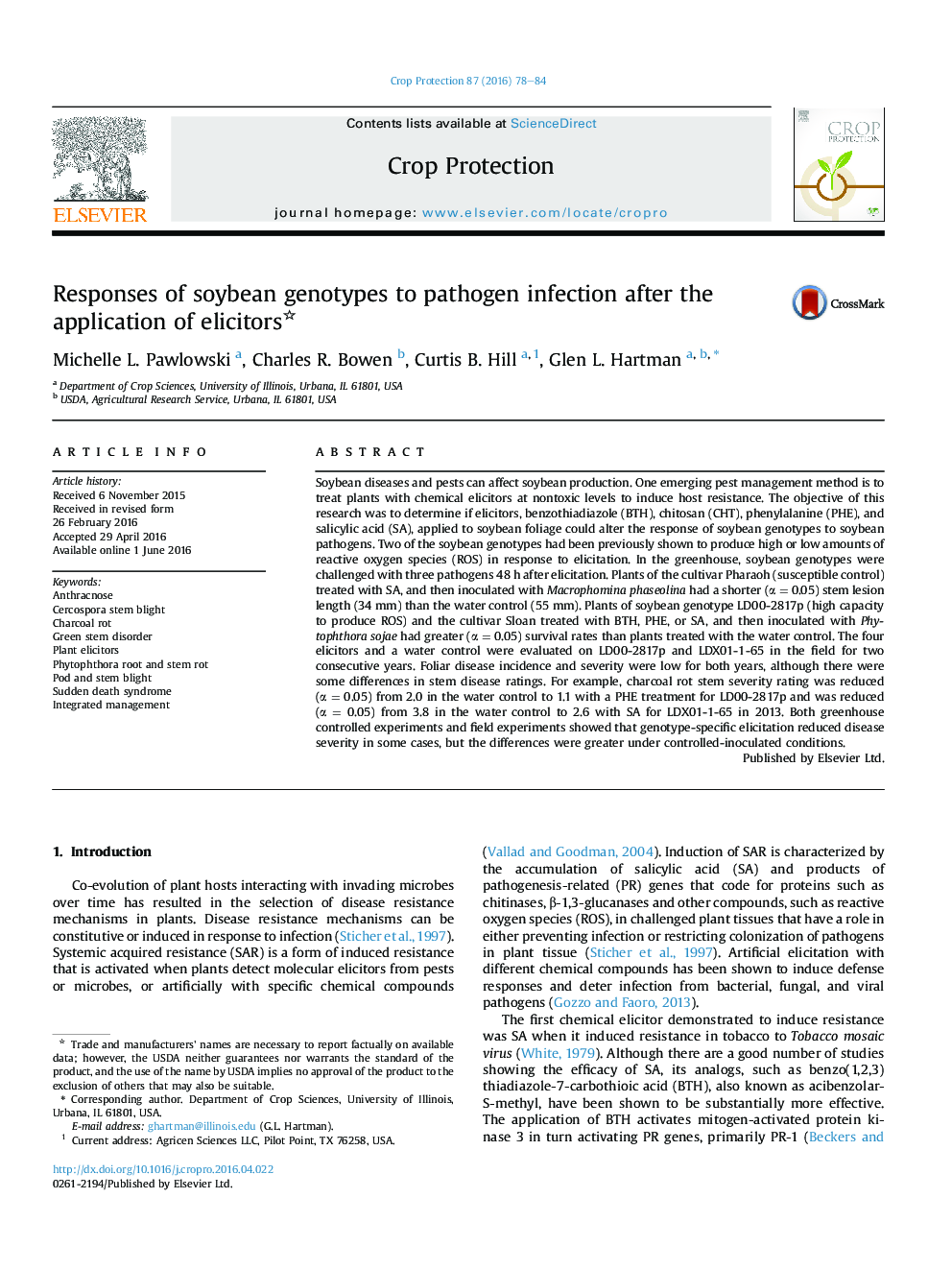| Article ID | Journal | Published Year | Pages | File Type |
|---|---|---|---|---|
| 4505556 | Crop Protection | 2016 | 7 Pages |
•Soybean genotype responses to pathogen inoculation differed by elicitor.•Salicylic acid elicitation reduced severity of charcoal rot.•Three elicitors reduced severity of Phytophthora root and stem rot.
Soybean diseases and pests can affect soybean production. One emerging pest management method is to treat plants with chemical elicitors at nontoxic levels to induce host resistance. The objective of this research was to determine if elicitors, benzothiadiazole (BTH), chitosan (CHT), phenylalanine (PHE), and salicylic acid (SA), applied to soybean foliage could alter the response of soybean genotypes to soybean pathogens. Two of the soybean genotypes had been previously shown to produce high or low amounts of reactive oxygen species (ROS) in response to elicitation. In the greenhouse, soybean genotypes were challenged with three pathogens 48 h after elicitation. Plants of the cultivar Pharaoh (susceptible control) treated with SA, and then inoculated with Macrophomina phaseolina had a shorter (α = 0.05) stem lesion length (34 mm) than the water control (55 mm). Plants of soybean genotype LD00-2817p (high capacity to produce ROS) and the cultivar Sloan treated with BTH, PHE, or SA, and then inoculated with Phytophthora sojae had greater (α = 0.05) survival rates than plants treated with the water control. The four elicitors and a water control were evaluated on LD00-2817p and LDX01-1-65 in the field for two consecutive years. Foliar disease incidence and severity were low for both years, although there were some differences in stem disease ratings. For example, charcoal rot stem severity rating was reduced (α = 0.05) from 2.0 in the water control to 1.1 with a PHE treatment for LD00-2817p and was reduced (α = 0.05) from 3.8 in the water control to 2.6 with SA for LDX01-1-65 in 2013. Both greenhouse controlled experiments and field experiments showed that genotype-specific elicitation reduced disease severity in some cases, but the differences were greater under controlled-inoculated conditions.
